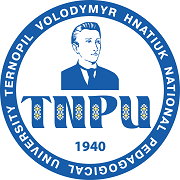MARTSISHOR – FOLKLORE AND ETHNOGRAPHIC SPECIFICITY OF LOCAL TRADITION
DOI:
https://doi.org/10.32782/2307-1222.2025-59-17Keywords:
March 1st, cultural heritage, martsishor, symbolism, traditionAbstract
Martsishor is a traditional holiday characteristic of Romania, the Republic of Moldova and other countries of the Balkan Peninsula, which is celebrated on March 1st. It is one of the key elements of the cultural identity of these peoples. The article examines various aspects of martsishor, starting with its history and etymology. It has been established that martsishor has deep historical roots associated with Roman, prehistoric beliefs and agricultural practices of the aforementioned peoples.This holiday marks the beginning of spring, the revival of nature and is associated with the wearing of martsishor. It is created and worn following a series of rituals. The martsishor is a lace woven from two twisted threads of white and red colors. It was discovered that until the 19th century martsishor were made using other colors, such as black, blue, yellow, green, etc. It has been established that the color range of the martsishor had several variants even within the same ethnic community. Today, martsishor is made almost exclusively from red and white threads, using various techniques and materials, and preserving ancient motifs that once had a mythical and magical significance and were widespread in folk art. The red color symbolizes the feminine, and the white color symbolizes the masculine. The twisted red and white threads of martsishor symbolize the unity of opposites. This decoration serves as a kind of amulet, a talisman for its wearer; it protects its wearer from evil forces and brings them health and happiness.Martsishor is worn by everyone, regardless of age, but especially by young people. Traditionally, people wore martsishor on their necks, wrists, ring fingers, waists, and legs, braided in their hair. After World War II, martsishor is attached to clothing and worn on the chest. Today, it is believed that martsishor has lost some ritual functions, does not protect the human body so much due to new trends in its wearing. According to folk traditions, martsishor was also attached to domestic animals, hung on doors, windows, and tools.The work also highlights the rituals of farewell to the amulet and other customs associated with March 1th, which are practiced by the Balkan peoples: cleansing rituals (cleaning houses); prayers to God for good harvests, etc. It has been established that the traditions of the martsishor among the peoples of the Balkan Peninsula have regional characteristics. Despite globalization and the influence of external cultures, martsishor retains its popularity today. This indicates that even in the modern world, traditions can adapt to new realities, while maintaining an important role in the cultural life of communities. This cultural tradition has been included in the UNESCO Intangible Cultural Heritage, which proves that the peoples of the Balkans value this heritage, identify with it and pass it on to the younger generation.
References
Călin C. “Condica limbii româneşti <…>” şi contribuţia lui Iordache Golescu la cunoaşterea culturii noastre populare. Revista de etnografie şi folclor. 1976. Tomul 21. № 1. P. 9.
Călin C. Mărţişorul – coordonate istorice şi actuale. Primăvara. Tradiţii şi obiceiuri. 1991. P. 9.
Caranfil N.A. Cântece populare de pe valea Prutului. Huși : Tipografia Asociaților, 1872. 94 p.
Băieșu N. Folclor românesc de la est de Nistru, de Bug, din nordul Caucazului. Texte inedite. 2007. Vol. I. P. 310–317.
Băieșu N. Tradiții etno-folclorice practicate în luna martie (“cap de primăvară”). Sub semnul Mărțișorului. 2015. Р. 80–86.
Buzilă V. Aspecte rituale şi sărbătoreşti ale Mărţişorului. Anuarul Muzeului Etnografic al Moldovei. 2010. P. 239–262.
Buzilă V. Practici culturale asociate Mărțișorului în comunitățile din Republica Moldova. Sub semnul Mărțișorului. 2015. P. 11–22.
Prohin A. Mărțișorul în sud-estul Europei. Sub semnul Mărțișorului. 2015. P. 72–79.
Pletosu V. Tradiția milenară a mărțișorului – simbolul regenerării noastre spirituale. Limbă, Literatură, Folclor. 2022. № 1. Р. 83–90.
Lutic M. Timpul sacru. Sărbătorile de altădată. Iași : Editura Vasiliana 98, 2022. 560 p.
Evseev I. Dicţionar de simboluri şi arhetipuri culturale. Timișoara : Editura Amarcord, 1994. 220 p.
Marian S.F. Baba Dochia. Sărbătorile la români. Studiu etnografic. 1994. Vol. I. P. 281–318.
Sub semnul Mărțișorului / coordonator științific V. Buzilă. Chișinău : Bons Office SRL, 2015. 100 p.
Ghinoiu I. Dicționar de mitologie română. Bucureşti : Editura Univers Enciclopedic Gold, 2013. 430 p.
Ghinoiu I. Obiceiuri populare de peste an. Dicţionar. Bucureşti : Editura Fundaţiei Culturale Române, 1997. 286 p.
Bratiloveanu-Popilian M. Obiceiuri de primăvară din Oltenia. Calendarul ortodox şi practica populară. Bucureşti : Editura “Constantin Matasă”, 2001. 246 p.
Ispas S. Cultură orală și informație transculturală. București : Editura Academiei Române, 2003. 219 p.










